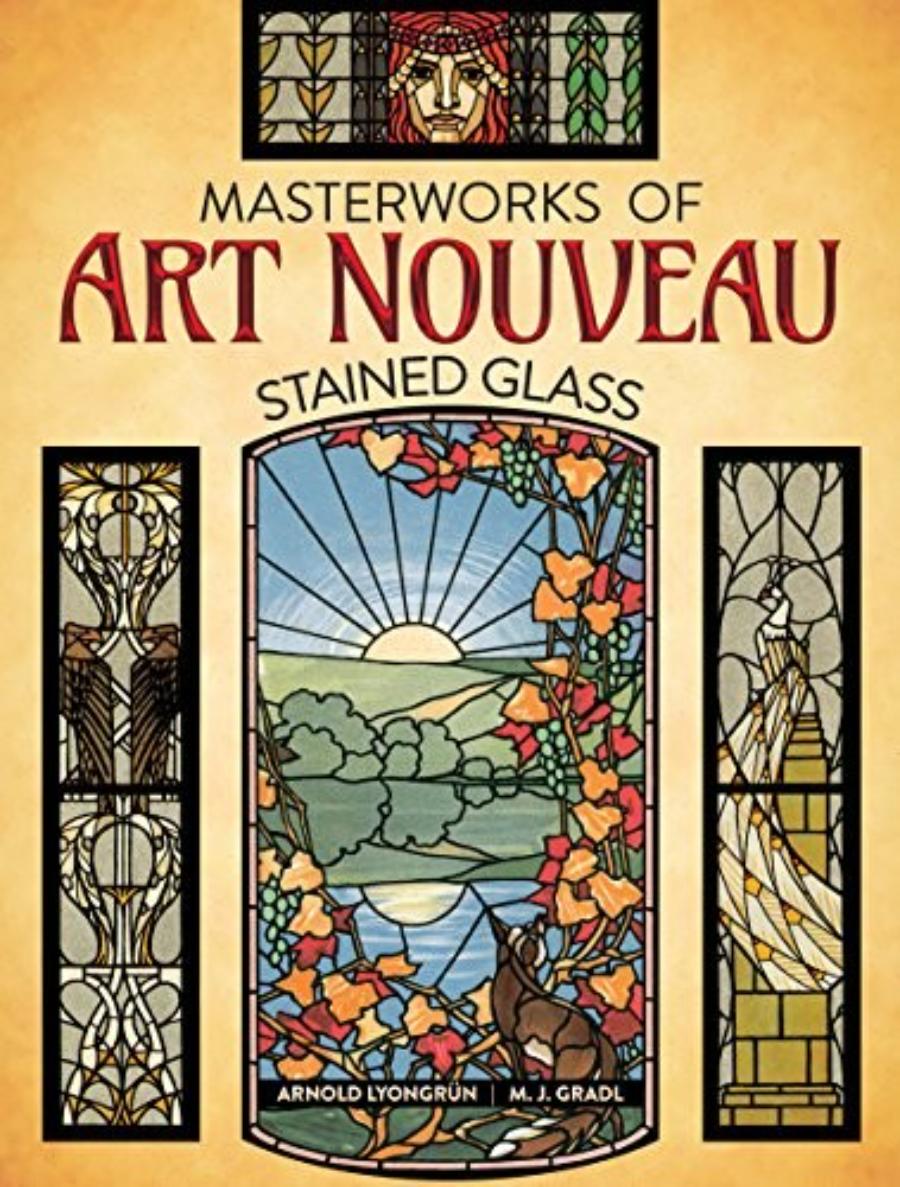Best Selling Products
What is Art Nouveau? Applications of Art Nouveau in Graphic Design
Nội dung
- 1. What is Art Nouveau?
- 2. Origin and development of Art Nouveau
- 3. Outstanding features of Art Nouveau
- 3.1. Soft and graceful curves
- 3.2. The combination of art and practical application
- 3.3. Natural patterns
- 4. Application of Art Nouveau in graphic design
- 4.1. Create unique designs with curvy patterns
- 4.2. The development of posters
- 4.3. Use soft and subtle colors
- 4.4. Application in product packaging
- 5. Art Nouveau in architecture and interior design
- 5.1. Art Nouveau in architecture
- 5.2. Art Nouveau in interior
- 6. Why does Art Nouveau still have such a strong influence on modern graphic design?
- 7. Conclusion
Art Nouveau is a prominent design style of the late 19th century, characterized by creativity and artistry. Explore the application of Art Nouveau in graphic design and its influence on modern art.

Art Nouveau is an art style that dominated the design world in the late 19th and early 20th centuries. With soft, curving lines inspired by nature, this style still retains a strong influence to this day, especially in graphic design. In the article below, Sadesign helps you explore in detail about Art Nouveau and its application in graphic design, better understanding the unique combination of art and technology.
1. What is Art Nouveau?
Art Nouveau, also known as "Art Nouveau," is an artistic style that emerged in the late 19th and early 20th centuries. The word "Art Nouveau" comes from the French word for "New Art," reflecting the innovation in the approach to art form and design. The style was characterized by a combination of applied art and design, breaking the limitations of previous art schools such as Neoclassicism and the Renaissance.
.jpg)
Art Nouveau is known for its curvaceous images, delicate details, and patterns inspired by nature such as leaves, flowers, animals, and other natural elements. These characteristics give a natural and soft feel, completely different from the sharp, angular images of previous art styles.
2. Origin and development of Art Nouveau
Art Nouveau began to develop in Europe in the late 19th century and quickly spread across the globe. Artists and designers in countries such as France, Belgium, England, and Germany contributed greatly to the development of the style. While France is where Art Nouveau flourished, countries such as Belgium, Spain, and Italy also created their own distinct styles that were still influenced by Art Nouveau.
This style was seen as a reaction against the rigid rules of the Classical period, and at the same time an invitation to creativity and innovation in design. Artists Victor Horta (Belgium), Hector Guimard (France), and Antoni Gaudí (Spain) are the names that represent the Art Nouveau movement, leaving a deep mark on architecture, graphics, and other applied arts.
3. Outstanding features of Art Nouveau
With a subtle combination of nature and technology, this style not only brings unique designs but also creates a completely new feeling for living space and art. The creativity in using soft curves, images of flowers, animals or other natural elements is the most recognizable feature of Art Nouveau. The elaborate and sophisticated decorative details not only demonstrate the artist's ingenuity but also reflect a revolutionary artistic concept, breaking classical stereotypes to move towards a more creative future.
.jpg)
3.1. Soft and graceful curves
One of the defining characteristics of Art Nouveau is its smooth, angular curves, which create a pleasant and natural feeling. The shapes, from flowers to animals, are all transformed into soft, artistic curves. No longer rigid straight lines or sharp shapes, Art Nouveau uses curves to recreate the delicate beauty of nature.
3.2. The combination of art and practical application
Art Nouveau is not only a pure artistic style but also reflects the combination of aesthetics and practicality in design. From everyday objects such as chandeliers, tables and chairs, stained glass windows to large architectural works, Art Nouveau creates a perfect blend of art and function. These designs are not only beautiful but also convenient, meeting the needs of human life.
3.3. Natural patterns
A noticeable feature of the Art Nouveau style is the dense appearance of natural patterns. These motifs are inspired by the world of plants, animals, insects and other natural elements. Curving floral motifs, birds and insects are used to create soft and vibrant lines for design products. This is one of the highlights that makes Art Nouveau a characteristic and easily recognizable style.
4. Application of Art Nouveau in graphic design
Art Nouveau not only had a profound influence on architecture and interior design, but also had a strong influence on graphic design. Prominent graphic artists of the Art Nouveau movement expanded the concept of decorative arts, applying them to posters, advertisements, packaging, books, and consumer products.
.jpg)
4.1. Create unique designs with curvy patterns
In graphic design, Art Nouveau encouraged the use of soft, curved lines, such as watermarks or vines, to create a distinctive and recognizable style. Images of flowers, leaves, branches, or other natural symbols were incorporated into the designs, providing unlimited creativity in expressing messages.
4.2. The development of posters
One of the most prominent uses of Art Nouveau in graphic design is posters. Artists such as Alphonse Mucha made their name with famous posters that were heavily influenced by Art Nouveau. These posters were not simply advertising media but also works of art, showing a high level of creativity in combining images and typography.
4.3. Use soft and subtle colors
Art Nouveau placed special emphasis on the subtle use of color. Graphic designers used this principle to create designs that were harmonious, soft, and pleasing to the eye. The colors in Art Nouveau design not only served an aesthetic purpose, but also highlighted natural elements, creating a sense of intimacy and relaxation.
4.4. Application in product packaging
In addition to purely artistic products, Art Nouveau is also widely used in product packaging design. Labels, boxes, and bottles are decorated with curved patterns, motifs that symbolize luxury and sophistication. These details not only create a strong impression but also contribute to enhancing the aesthetic value of the product.
5. Art Nouveau in architecture and interior design
.jpg)
With soft curves and natural motifs inspired by the world of plants and animals, this style reflects a desire to break away from the rigid forms of classical architecture. The fusion of art and function has made Art Nouveau a symbol of creativity and innovation. In living spaces and architectural works, Art Nouveau not only brings exquisite beauty but also enhances the sensory experience, creating unique and inspiring spaces.
5.1. Art Nouveau in architecture
In architecture, Art Nouveau brought about outstanding works with curved elements, facades decorated with natural patterns and stained glass. Art Nouveau works not only made a strong impression on aesthetics but also demonstrated creativity in the use of new materials. Buildings with curved forms, stained glass windows or elaborately decorated walls have become symbols of this style.
One of the most famous examples of Art Nouveau architecture is the Casa Batlló in Barcelona, designed by architect Antoni Gaudí. The building is notable for its curvaceous walls, arches, and natural-inspired decorative details.
5.2. Art Nouveau in interior
The Art Nouveau style is also clearly reflected in interior design. Decorative objects in the house, from tables, chairs, lamps, paintings, to household items all bear the mark of this art. Soft curves, the combination of colors and natural motifs create an inspiring and intimate living space. Every detail in the Art Nouveau interior not only focuses on aesthetics but also on convenience and suitability for daily use.
6. Why does Art Nouveau still have such a strong influence on modern graphic design?
.jpg)
Today, although new design styles are constantly emerging, Art Nouveau remains a powerful influence in graphic design. One of the main reasons is its ability to blend art and function, making designs that are not only beautiful but also accessible and understandable. Art Nouveau principles, such as the use of natural patterns and curvaceous lines, are still very relevant in conveying a message in a subtle way without losing the beauty of the design.
In addition, this style also easily adapts to new design technologies, from the use of graphic software to social media platforms, helping Art Nouveau not only exist in classical works of art but also thrive in the digital age.
7. Conclusion
Art Nouveau is a unique and creative design style, bringing a great combination of art and applied design. The applications of Art Nouveau in graphic design not only show aesthetic beauty but also bring high use value, creating products that are not only beautiful but also sophisticated and convenient. This style still retains its artistic value over time, inspiring generations of modern artists and graphic designers. Hopefully this article will help you better understand Art Nouveau and its application in the fields of art and design . If you know more about this field, visit Web Sadesign - the most prestigious and quality address on the market today!












































